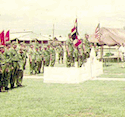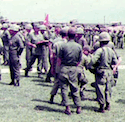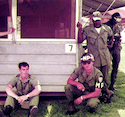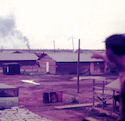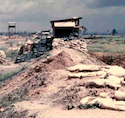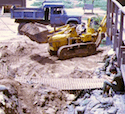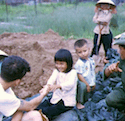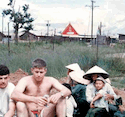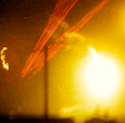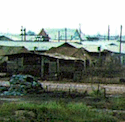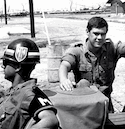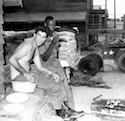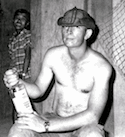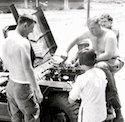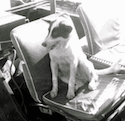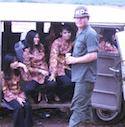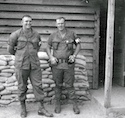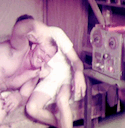~ 720th Military Police Battalion Vietnam History Project ~ |
Bearcat (Camp Martin Cox) Detachment & Convoys |
|
|
|
Bearcat
Timeline Summary |
The base camp was located three miles southeast of Long Binh Post in Long Than District of Bien Hoa Province and twenty miles northeast of Saigon on the eastern side of Highway QL-15 in Corps Tactical Zone-Military Region III was part of the Saigon defensive ring. Bearcat was originally a French Colonial Forces airfield, later used by the Japanese during World War II. Early in the Vietnam War, the 1st Special Forces established a base there. In 1966 the 15th Engineer Battalion of the 9th Infantry Division, who arrived in Vietnam aboard the USNS Sultan with the 720th MP Battalion, expanded and constructed new facilities at the Bearcat base. Elements of the 2nd Brigade, 1st Infantry Division used it as a stopover after their arrival in-Vietnam. Then it was still known as Bearcat. According to unverified information, the Bearcat base was renamed on 4 July 1966 to Camp Martin Cox for SFC Martin Cox who was killed in action on 7 April 1966. The 1st moved from Bearcat to Di An in October 1966, and the base became a stopover for the newly arrived 3rd Brigade, 4th Infantry Division from 12 October to November 1966 before they moved to Dau Tieng. When the name changed back to Bearcat is unknown, but probably after it became the new home of the 3rd Brigade of the 9th Infantry Division “Old Reliable's” in December 1966. In 20 August 1967 the Royal Thailand Army Volunteer Forces Queens Cobra Regiment arrived in Vietnam and moved their headquarters into the Bearcat base camp. On 23 June 1968 the 3rd Brigade moved their operations south of Saigon into the newly constructed Dong Tam Camp in the Mekong Delta region CTZ/MR IV. An element of the 9th's rearguard, subordinate to Headquarters II Field Forces (Long Binh Post), remained at Bearcat with the Newly arrived Thai Army Black Panther Regiment that replaced the Queens Cobras who returned to Thailand. It’s elements provided heavy artillery support to the Battalion’s Tactical Area Of Responsibility during Operation STABILIZE from September 1967 through September 1970, when the base became home to the 25th Infantry Division who moved from Tay Ninh & Cu Chi and took over the civic action & security in the Battalion's former Tactical Area Of Responsibility until they stood down and returned stateside on. |
|
. |
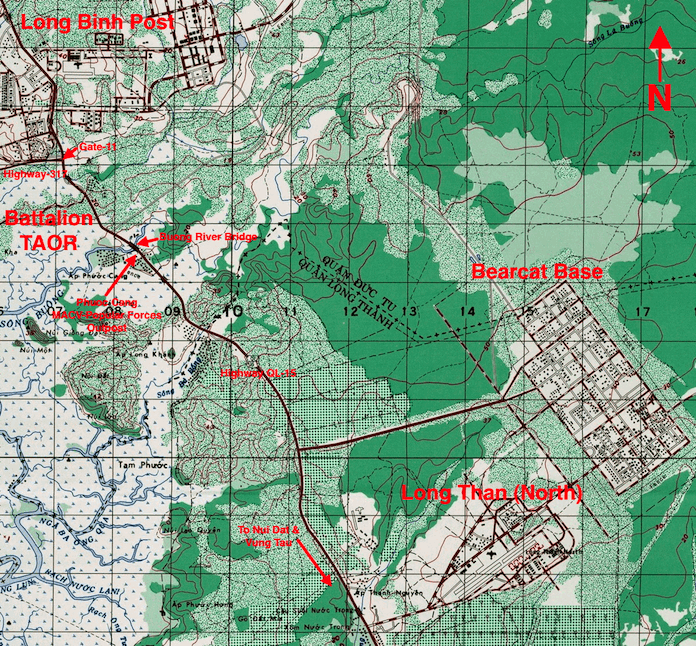 |
Map Of Bearcat Area 1969 |
1966 |
. |
4 - 8 December During convoy Operations CANARY, DUCK & IOLA the 720th MP Battalion was tasked with traffic control and security in support of elements of the 173rd Airborne Brigade, 5th & 6th Battalions of the Royal Australian Regiment, in support of elements of the 199th Light Infantry Brigade (LIB) and 9th Infantry Divisions move from debarkation at the Port of Vung Tau to their new base camps at Long Binh and Bearcat, respectively. |
|
|
|
. |
1967 |
Royal Thailand Army Vietnam Forces Queen’s Cobras Arrive
|
Editors Note: Prior to the deployment of the Royal Thai Army combat troops, from 1964 through 1967 Thailand previously contributed components of its Air Force and Navy to the war effort. The Air Force provided trainers and transports, and the Navy provided two ships and several Landing Ship Tanks (LST) that were in use in the MeKong Delta Region of IV Corps Tactical Zone.
|
. |
11 July Five MP's from the 615th MP Company, 720th MP Battalion were assigned to transport via aircraft, 53 enemy POW's from the Bearcat detention facility to the POW Camp at Can Tho in Phong Dinh Province in the Mekong Delta Region of IV Corps Tactical Zone. The POW's were captured during Operation PADDINGTON. The five, SSG Marion Lord, SGT Keith Allen, SP/4's Benny Edmondson, David Bryant, and PFC Scott Wilson were transported from their company compound on Long Binh Post by V100 to Bearcat on Highway QL-15. Their flight in a C-7A Caribou of the Royal Thai Air Force (aircraft mission #21) was scheduled to depart Bearcat at 0700 hours and arrive in Can Tho at 0815 hours. |
. |
Editors Note: From late 1966 through 1972 720th MP Battalion Prisoner Of War transport elements routinely carried captured enemy soldiers from the Bearcat Base to other ARVN POW Camps and U.S. Army Military Intelligence processing facilities throughout III & IV Corps Tactical Zones.
|
. |
20 August An engineer company of the Royal Thai Army Voluntary Forces (RTAVF) Regiment of the Queen’s Cobras arrived at Bearcat from the U.S. Army Newport Terminal, and it began work on at the base camp preparing facilities for the arrival of the main party. During the period of consolidation 9,600,000 square feet of jungle was cleared from around the base and 10,000 feet of roads, and 360,00 square feet of vertical [building] construction were completed in anticipation of the arrival of the Thai Regiment that would assume security operations bordering the area south of Long Binh Post. They also initiated air-drops of 1,540,000 leaflets, and hand disseminated 15,347 miscellaneous pamphlets and magazines by the 246th PSYOP Company at Long Binh Post. |
|
|
. |
19 September The battalion provided personnel for convoy escort, discipline, law and order, and route security in support of Operation CONDOR (1st Logistical Command Secret OPLAN 17-67), for the transport of the 1,200 troops comprising the main body of the Royal Thai Army Volunteer Forces Queens Cobra Regiment from the U.S. Army Newport Terminal Complex on Highway-1A (#316) Saigon River to the 9th Infantry Division Base Camp at Bearcat.
The operation lasted through 21 September. |
. |
21 September The Commanding Officer of the Royal Thai Army Queen's Cobras Regiment arrived at the U.S. Army Newport Terminal with the main body aboard the USS Navarro. A welcoming ceremony was conducted by the Vietnamese Government. Dignitaries on hand to welcome the regiment included: GEN William Westmoreland of MACV, Mr. Bancha the Thai Ambassador, LTG Frederick C. Weyland of II Field Forces Command, MG George G. O’Connor of the 9th Infantry Division, MG Thomas H. Scott of 1st Logistics Command, BG M. McD. Jones, Jr. of U.S. Army Support Command, Saigon and GEN Yose of the Royal Thai Army Forces.
A complement of 1,770 personnel with their equipment and vehicles disembarked for convoy transport to the Bearcat Base Camp . |
. |
28 November The Royal Thai Army Queen's Cobras Regiment, Armored Personnel Carrier (APC) platoon arrived at the base camp from Tan Son Nhut Air Field, Saigon which completed the Thai Army's first deployment to Vietnam. |
. |
1968 |
. |
Due to the constant enemy activity on the roadways of III Corps Tactical Zone during and after the 31 January Tet New Years Offensive and it’s following May Mini-Tet attacks, the 9th Infantry Division (rear) Transportation Headquarters at Bearcat requested escort assistance for their critical night convoy supply runs from Bearcat to the U.S. Army Newport Terminal on Highway-1A (#316), and back. Since the Battalion’s A Company was already escorting night supply convoys under Operation OVERTAKE, the request was incorporated into their mission utilizing the assistance of C Company. |
. |
25 May, 2006 Hours, a C Company Operation OVERTAKE convoy escort composed of two Armored Personnel Carriers and a gun-jeep assigned to pickup 9th Infantry Division transport vehicles at the Bearcat Base Camp for escort to the U.S. Army Newport Terminal were ambushed by enemy forces of unknown size by RPG, machine-gun and small arms fire at two locations on Highway QL-15. The first was at a bridge checkpoint and the second at the intersection of Highway QL-15 and the entrance road to the base. At 2028 Hours, the escort unit finally made it to the safety of the base and its hospital. The C Company casualties were PFC Howard E. Doran, punctured eardrum; SP/4 Thomas E. Walker, shrapnel wound to the jaw; PFC John R. Hollander, shrapnel wound in both knees; PFC Daniel J. Flynn, serious shrapnel wounds requiring an emergency tracheotomy. PFC Flynn age 20, of Kings Park, NY, would die of his wounds within several hours. Due to the ferocity and boldness of the enemy attacks, the escorts remained at Bearcat until the roadway could be cleared in the morning. |
Royal Thailand Army Volunteer Forces Black Panthers Arrive |
June A Company was tasked with assigning an eleven man detachment to assist the Thai Military Police with combined patrols to enforce discipline, law, and order for 3,000 man Royal Thai Army Vietnam Forces, Black Panther Regiment that was due to arrive. The Thai Black Panther Regiment also contained a Military Police Company of one-hundred and twenty men, thirty of them who are to be assigned to the combined MP patrol operations with A Company. 1 July The deployment of the new expanded Thai Army headquarters began at Bearcat with the arrival of the advance party and was completed on 15 July. 20 July The first of two increments of the Royal Thai Army Black Panther Regiment arrived in South Vietnam and was deployed at Bearcat. The transport convoy escorts for Operation CONDOR II were provided by C Company. The division was under the operational control of the Commanding General, Headquarters U.S. Army II Field Force (Long Binh Post). |
|
. |
29 July The Headquarters and colors of the 9th Infantry Division, minus a rear headquarters detachment including military police to orient the Thai Division with area operations until 15 August, relocated from Bearcat to Dong Tam, IV Corps Tactical Zone, Mekong Delta until the division withdrew from Vietnam in August 1969. |
. |
August The HQ and colors of the 9th Infantry Division relocated from Bearcat, to Dong Tam, IV Corps Tactical Zone, Mekong Delta, where they remained until the Division withdrew from Vietnam in August 1969. 6 October A squad + from A Company relieved the temporary four man C Company Detachment at the Bearcat base camp, 9th Infantry Division Provost Marshals Office. The A Company detachment was responsible for the entire operation and liaison with the Royal Thailand Army Vietnam Force Military Police Company also based at Bearcat. Approximately 3,000 U.S. troops of various support units were still operating at the base. A combined U.S. and Thai MP Desk was formed and motorized patrols were assigned. Two combined patrols during daylight hours and one during the evening hours. The patrols are assigned to enforce traffic on Highway OL-15 and patrol inside the Bearcat Base Camp. They handle any vehicle crashes, traffic enforcement, transportation of illegal contraband, thefts, etc. The U.S. MP’s were praised by their Thai counterpart, LT Prasit, from Bangkok, Thailand, the MP Duty Officer. “To work with the U.S. Military Police is a great honor.” “Through cooperation and working together we have established a good relationship with the troops.” |
. |
Personal Reflection "I was transferred to Bearcat on 6 October 1968 as an original member of the A Company detachment who took over from the 9th Infantry Division MP's. We apprehended about 50 AWOL's working with the 9th MP Company the first couple of months we were there. Most were hiding in abandoned hooch's and bunkers on post left vacant when the Thai Queen's Cobra Regiment moved out. We would wait till about 2:00 AM to make our raids. One night I was run over by three AWOL's who escaped. A fourth one one went out the back door and was caught by my partner. He had been AWOL for 8 months and was a member of the 1st Infantry Division. We later flew to Lai Khe for his court martial. These guys would live off of the black market and often had Vietnamese women living with them." SP/4 William H. Antila, A Company, 720th MP Battalion, August 1968-November 1969. |
|
13 October, Personal Reflection “One of the first details we where assigned at the Bearcat Detachment was Highway QL-15 patrol. We would leave post every morning and ride (north) to the defile at the temporary Baily Bridge over the Buong River first, then back up the highway (south) past the rubber plantation to the Long Than area and back again. If you got that patrol, you were out all day. All the guys in the detachment spent a bit of time on QL-15. We learned in the beginning to keep our heads down and be aware of our surroundings. Oh yes, we learned to not wear our MP covers on QL-15 patrol, we found out they were pretty big targets. When we were watching the bridge, the engineers also left a task. They left a pail and rope and we had to keep the new concrete abutments wet so they cure faster in the heat of the day. Took the water right out of the river below and kept it up pretty much all day long. SP/4 Eugene G. Guilford and I were patrolling Highway-QL15 between Bearcat and Long Binh. We were heading to the blown bridge to check and guard. |
. |
|
|
As we drew closer we could see that something was wrong. The back end of a 3/4-ton was sticking out the shallow part of the river by the bridge. The Mama & Papasan’s were letting us know that there was someone in the water caught in the truck. Before the jeep stopped rolling, Gene had his gun belt off and he was down the bank and into the water. I secured the area, called for backup and a “Dust-off” from Long Binh Post for help. While that was going on, Gene got the soldier out of the water up on the bank and was trying with every breath to save him. From what I could tell, Gene revived him. The chopper arrived and Gene was still caring for him. I got directed the chopper in as close as I could, and we got the soldier loaded and off to Long Binh and the hospital. I can only say that it took a while, but it felt like a lifetime. During the rescue Gene never thought of himself or the danger he put himself in. We where relived by our backup and returned to Bearcat to report it to the post commander and our MP desk. |
. |
To say the least, Gene was exhausted and we didn’t talk about it for the remainder of that day. Unfortunately we learned later on that the soldier did not make it. We never found out his name, but it hurt. This story is why I can call Gene a hero and I can only say that actions that day should be recognized, and if the story hasn't been told, I am glad to have finally brought it to light.” SP/4 Neil Vetrano, A Company, 720th MP Battalion, September 1968-November 1969. |
. |
1969 |
. |
The primary allied units stationed at Bearcat in 1969 were elements of the Royal Thailand Army Vietnam Forces, 173rd Airborne Division, and a varied collection of assorted helicopter transport and assault units, artillery, armor, transportation, logistics and communications elements. 9 January Operation, CONDOR III The second increment of 5,704 troops and equipment of the Royal Thai Army Black Panther Regiment was deployed to Bearcat and completed the move on 25 February. |
. |
|
|
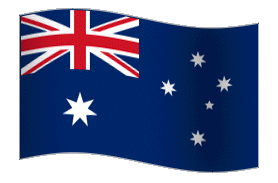 |
One of the communications elements, the Royal Australian Army 104th Signals Squadron, manned a small detachment of signalmen. The Australian enlisted personnel in the detachment shared the same billets with the A Company MP Detachment. "Royal Australian Signals, 104 Signal Squadron replaced 103rd Signal Squadron in Vietnam in 1966. Members for the 104th were drawn from the 139th Signal Squadron at Enoggera Brisbane, Australia. |
. |
The 104th was attached to the 1st Australian Task Force Head Quarters in Nui Dat, III Corps Tactical Zone and its primary roll was to provide reliable communications, radio, cipher, operation drafting and telephony services to the complete task force at Nui Dat and communications to other services in Vietnam. The 104th was not a combatant unit such as the Infantry, but provided clearing patrols and was heavily involved in big fire-fights like the Battle of Coral, Balmoral, TET (1968) and many more. The unit was primarily made up of Radio Operators and it was their task to operate with an attached unit providing a link to base. Calling artillery, Dust-offs, Locsats (location status), Sit-reps (Situation Reports) and in many cases operating in a Liaison situation between the ARVN, U.S. Military, Thai's, Kiwis (New Zealand) and Australian's in the battlefield. |
. |
The Liaison Officer/Operator (LO) had to be capable of working alone, of using the Cat Code (converting plain language into 5x5 figures and letters to code up secure messages), precise map reading, impeccable procedures and capable of operating multiple radio and phone systems at any one time. Most LO Radio Operators worked 12 hour shifts and were ready at all times to move to another operating station. The 104th was still operational right to the last days of the war and Australia's withdrawn. |
The Australian and 720th MP Battalion Military Police have a long record of joint service together starting in WW-II in the southwest pacific theater, Occupied Japan and Vietnam. The Veterans of the 720th Military Police Battalion Vietnam History Project extend their appreciation to Signalman Nick Quigley, formerly of the 104th Signal Squadron, Royal Australian Army, and his mates for their assistance in Vietnam and with the 1969 Timeline History of the Bearcat Detachment. Thanks "Mate" For additional information on Nick Quigley's service Click Here. |
|
. |
25 February A Company convoy escorts completed the movement of the remaining elements of the Royal Thai Army Black Panther Regiment from the Newport Army Terminal docks to their new base camp at Bearcat started on 9 January.
|
. |
20 June The members of the A Company Bearcat Detachment were the task to provided supplemental personnel for security for General Craighton W. Abrams the Commanding General of Military Assistance Command Vietnam (MACV) who arrived at the Bearcat base camp to personally present U.S. awards, some valor but mostly Purple Heart medals, to members of the Royal Thailand Army Volunteer Forces, headquartered at the base camp. |
Bearcat was a favorite target for enemy harassment and it occurred on almost a daily routine. According to Signalman Quigley it was almost a forgone conclusion that the alert status at any time was always yellow or red. Most of the incoming enemy fire was in the form of mortars and rockets with the occasional ground probes of the perimeter defenses by the local Viet Cong Main Force units. |
. |
15 July With the constant incoming enemy harassment fire, overhead protection during the frequent attacks was paramount. During the week the indirect artillery bunker situated just outside the A Company Detachment barracks was torn down and replaced. After the civilian Vietnamese contractors finished the structural work their crew of mostly women with their children who accompanied them to work, filled the hundreds of sand bags needed. |
. |
21 July, 0130 hours An enemy probe of the base camp perimeter by ten Viet Cong was answered by the response of a DC3 C47 “Spooky” gunship that raked the area just outside the berm with its 7.62mm mini-gun fire. The incident lasted for approximately 45 minutes. The bodies of two VC were recovered when it was over. |
. |
12 August The third increment of the Royal Thai Volunteer Force Black Panther Regiment completed its deployment to Bearcat to replace the first increment, which returned to Thailand. The replacement brigade assumed the designation of 1st Brigade. It is unknown if the 720th MP Battalion participated as convoy escorts in this movement. 1 October CPT Arthur L. Huckabay of A Company was assigned as Provost Marshal at Bearcat. |
. |
1969 Miscellaneous Photographs |
A "?" following the photo number denotes further identifications are needed, and an Email Link is provided. |
Personnel & Facilities |
SP/4 Robert Herrera. |
|
Joint unit card game in the barracks. |
|
John Urban Army CID or Provost Marshal Investigator. |
|
SGT Bridges and SP/4 Lee with a "Hooch Maid." |
|
SGT Ross with two "Hooch Maids." |
. |
1970 |
. |
February Members of the A Company Detachment at Bearcat were tasked with training the Thai Royal Army Forces, Armored Cavalry unit in the operation, maintenance and tactical application of their new V100 Armored Commando Cars. The final phase of their training program involved a practical exercise in which the Thai’s joined the A Company escorts during the Operation OVERTAKE Night convoy escorts. 24 February As part of the USARV Intensified Vietnamization Program, the 25th Infantry Division's 2nd Brigade Task Force II was being redeployed from the Cu Chi area in Tay Ninh Province to be part of the defensive ring around Saigon Their new Headquarters would be the Bearcat Base Camp in Bien Hoa Province. From 24 February through 1 March elements of the 25th Infantry Division, 2nd Brigade Task Force II, were moved via convoy from Cu Chi to Bearcat, escorted by elements of C Company. SSG Archie E. Moss was the detachment Noncommissioned Officer In Charge. 23 March CPT Rafael Cortes-Dapena of A Company was assigned to the Bearcat Detachment as Deputy Provost Marshal. 11 May CPT Rafael Cortes-Dapena was reassigned from his position of Deputy Provost Marshal at the Bearcat Detachment. 27 May 1LT Jason R. Gettinger, Jr. departed as Deputy Provost Marshal at Bearcat. 27 July 1LT Joseph L. J. Brillion, A Company, was assigned as the Bear Cat Deputy Provost Marshal. 31 October At the end of the month Battalion was operating the following remote detachments in III & IV Corps Tactical Zones: A Company- Vung Tau, Phu Loi and Bearcat; B Company- Dong Tam, Can Tho and Soc Trang; C Company- Xuan Loc, Cu Chi-Tay Ninh and Lai Khe; 212th MP Company (Sentry Dog)- Long Than (North), Newport Docks, Vinh Long and Soc Trang; 22nd Provost Marshal Detachment- Can Tho and Vung Tau. November Due to the increasing problem of North Vietnamese communist insurgencies in Thailand, including attacks against U.S. Military Assistance Command bases, and the deterioration of security in the bordering countries of Laos and Cambodia, the Thai Government announced it would start withdrawing its Volunteer Forces from Vietnam, the majority based at Bearcat. |
. |
1971 |
. |
April The Royal Thai Volunteer Force Air Force “Victory Flight” component, deployed to Vietnam in 1964, began their phased stand down and return that was scheduled for completion by December. 18 May The battalion realigned the combat support and combat service support missions within CTZ/MR III previously accomplished by A and C Company. Company A was responsible for operating provost marshal offices at Phu Loi, Bearcat and Vung Tau, and for convoy escort from Long Binh to Cu Chi-Tay Ninh, Vung Tau, Quan Loi and Phuoc Vinh. Company C was responsible for operating provost marshal offices at Lai Khe, Xuan Loc, Tay Ninh and Di An, and for convoy escort operations from Long Binh to Bao Loc, Phan Thiet, Song Be, Ham Tam, Bu Dop, and Bu Gia Mop. The armored vehicles within the battalion were divided between A and C Company. The personnel assigned to A Company for convoy escort purposes were reassigned to C Company, and personnel from C Company that were assigned to provost marshal offices at Di An, Lai Khe, Tay Ninh and Xuan Loc were reassigned to A Company. 26 May The responsibility for drug violations processing reverted from the 8th MP Group Criminal Investigation Divisions (CID) to the line duty MP’s, including processing of all evidence and reports. One additional clerk had to be added to the A Company Bearcat PMO to handle the additional workload. |
. |
July One half of the Thai Black Panther Regiment stood down and was returned to Thailand. 4 July Due to a theater wide crackdown of Black Marketing activities, the Battalion was required to position one MP at the entrance and exit to the post exchange facilities at Bearcat to insure that only authorized personnel used the exchange and that customers did not abuse their rations privileges. |
. |
19 August 1LT William A. D’Andrea of A Company was assigned as the Provost Marshal at Bearcat. 22 August Discipline, law and order patrol and convoy escort activities were curtailed at the detachment due to the assignment of forty Battalion enlisted men and one officer in support of the Drug Abuse Treatment/Holding Center (DAHC) on Long Binh Post. 31 August Battalion convoy destinations in Military Region III were: Tay Ninh, Phu Loi, Xuan Loc, Long Binh, Bearcat, Long Than, Nui Dat, Vung Tau and Tan An. 31 October The A Company Bearcat Detachment was still active. |
. |
Editors Note: 31 August 1971 was the last mention of the Bearcat detachment in available Battalion records. The National Archives reported that there were no Battalion Operations Report- Lessons Learned on file for the period of 1 November 1971 to 31 July 1972.
|
. |
1972 |
. |
February The remaining half of the Thai Black Panther Regiment stood down and was returned to Thailand. April Under the Intensified Vietnamization Program the bulk of the Royal Thai Volunteer Forces Headquarters detachment returned to Thailand with their Navy, that staffed two ships, and the Sea Horse Landing Ship Tank (LST) component deployed to Vietnam in 1967, and all that remained at Bearcat was a token force of 204 personnel. |
Use Your Browser Button To Return |










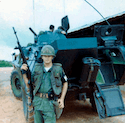
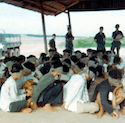
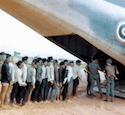
 RTAVF Headquarters
RTAVF Headquarters RTAVF
RTAVF RTAVF
RTAVF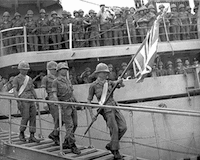
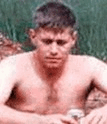 SP/4 Antilla
SP/4 Antilla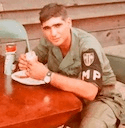
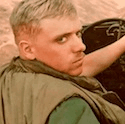
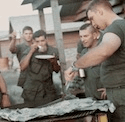
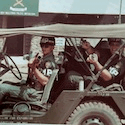
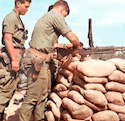
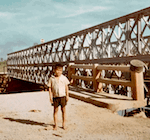
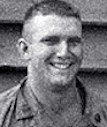 SP/4 Guilford
SP/4 Guilford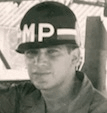 SP/4 Vetrano
SP/4 Vetrano

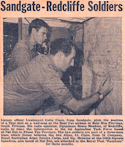
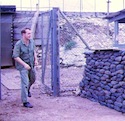
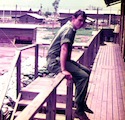
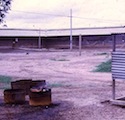
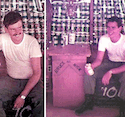
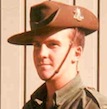 SM Quigley
SM Quigley
